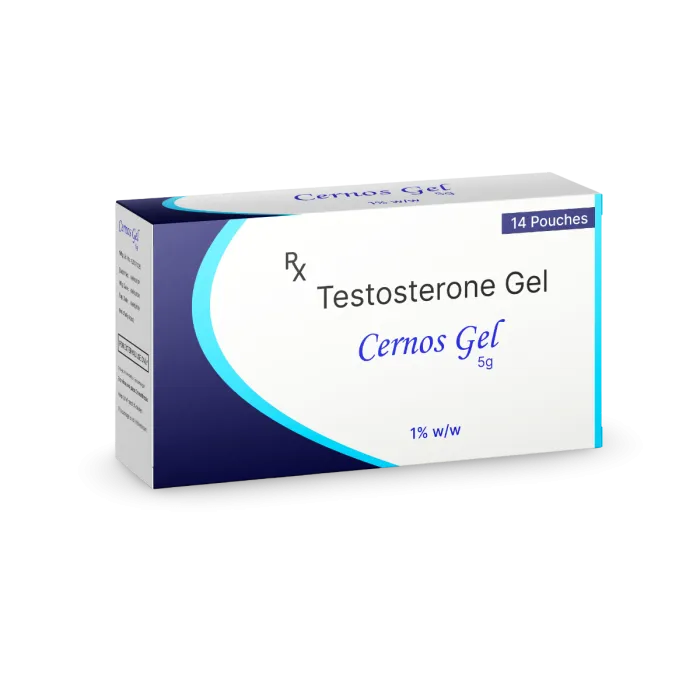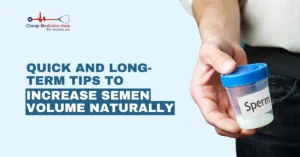Sustanon is a popular choice for men looking to regain their energy, improve muscle mass, or treat low Testosterone levels. While its benefits can feel life-changing, it’s equally important to understand the potential risks, especially for those considering it for long-term use.
This Testosterone medication works well because it releases hormones gradually over time through its combination of four different Testosterone esters (slow-release compounds).
However, more potent doses can also bring stronger side effects. These may start small, like oily skin or acne, and progress to more serious concerns, like hormonal imbalance or psychological issues.
Read on to learn about the Sustanon side effects, why they happen, and how to manage them safely.
1. Hormonal imbalance and endocrine system disruption
Sustanon is great for treating low Testosterone levels caused by medical conditions like Hypogonadism, but it can also significantly disrupt your body’s hormone balance. The external Testosterone in Sustanon tricks your hormone-regulating system into halting natural production, which may lead to long-term dependency or infertility.
Additionally, prolonged use can disrupt hormone signaling throughout the body, and recovery of natural hormone production can be difficult after discontinuation. In some cases, men may also develop breast tissue, a condition known as Gynecomastia.
Save up to 90% on your medicine bills

Cernos Gel 1%w/w

Cernos 40 Mg Soft Gelatin Capsule

Sustanon 250 Injection

Carmel Organics Ashwagandha Extract Tablets
2. Cardiovascular complications
Testosterone therapy, including Sustanon, has been linked to increased cardiovascular risks. These risks include elevated blood pressure, an increased likelihood of heart attack and stroke, and changes in cholesterol levels, particularly a decrease in HDL (good) cholesterol. Sustanon can also lead to increased Hematocrit, which thickens the blood.
3. Injection site reactions
Sustanon injections can cause pain, inflammation, and redness at the injection site. In some cases, users may develop sterile abscesses, and improper injection techniques can lead to infections. While rare, an oil embolism may also occur with improper use.
4. Dermatological issues
Sustanon can cause skin changes due to hormonal fluctuations. Users commonly experience acne, particularly on the back, shoulders, and face.
Other skin-related issues include pruritus (the urge to scratch), skin infections, and accelerated aging of skin tissues with long-term use.
5. Hair-related side effects
Sustanon can affect hair growth patterns. For those with a genetic predisposition, it can accelerate male pattern baldness. Users may also experience increased body and facial hair growth, texture, and quality changes. Existing hair loss may also progress at a faster rate.
6. Psychological and mood alterations
Testosterone therapy, including Sustanon, can lead to mood swings, increased aggression (often referred to as “roid rage”), anxiety, or depression. Sleep disturbances are also common, and there is the potential for developing dependency or addiction to the effects.
7. Water retention and electrolyte imbalance
Sustanon can cause water retention, leading to bloating and visible puffiness in the face and extremities. This can also result in electrolyte imbalances, potentially affecting muscle function, nerve signaling, and blood pressure regulation.
8. Liver function abnormalities
While injectable Testosterone like Sustanon 250 is generally considered less hepatotoxic (liver-damaging) than oral steroids, it can still cause liver stress. Users may experience elevated liver enzymes, jaundice (yellowing of the skin or eyes), and an increased risk of liver tumors with long-term, high-dose use. There can also be added stress on liver detoxification pathways.
9. Urinary and prostate issues
Testosterone therapy can impact prostate health and urinary function. Sustanon may lead to Prostate Enlargement (Benign Prostatic Hyperplasia) and elevated PSA levels. Some users may experience urinary retention or difficulty urinating, and though research shows mixed results, there may be an increased risk of prostate issues.
10. Polycythemia
Polycythemia, which affects up to 20% of men using Testosterone Replacement Therapy, can lead to excessive red blood cell production and blood thickening. This increases the possibilities of blood clots, stroke, and heart attack. Other symptoms include Hypertension, headaches, and visual disturbances.
11. Respiratory issues
Some users report breathing difficulties with Sustanon use, such as the exacerbation of sleep apnea and reduced pulmonary function in some individuals. Using Sustanon can also lead to voice deepening, potential structural changes in the larynx, and an increased risk of respiratory infections.
12. Sexual function changes
While Sustanon is often used to improve sexual function in men with Hypogonadism, it can paradoxically cause Erectile Dysfunction, particularly after discontinuation. Users may experience a decrease in libido following an initial increase. Other changes include variations in ejaculation volume and quality, testicular atrophy (shrinkage), and reduced sperm count.
How to lessen Sustanon side effects
For those using Sustanon under medical supervision, follow these steps to reduce risks based on Endocrine Society guidelines:
- Consult a doctor first: Only use Sustanon after proper medical evaluation. A hormone specialist will confirm if you genuinely need Testosterone therapy.
- Confirm proper diagnosis: Verify Hypogonadism with both symptoms (low energy, reduced sex drive) and at least two early morning blood tests showing low Testosterone.
- Use accurate testing methods: Request standardized Testosterone blood tests to ensure reliable results.
- Start with the smallest effective dose: Begin with the lowest dose that relieves symptoms while keeping Testosterone in the normal range.
- Monitor regularly: Track progress and side effects through blood tests and checkups (frequency decided by your doctor).
- Adjust as needed: Consult a healthcare expert before changing doses or stopping treatment if blood tests show issues, such as high red blood cell counts.
- Avoid risky behaviors: Never mix Sustanon with other steroids or use higher doses than prescribed.
- Avoid with high-risk patients: Avoid Testosterone therapy in men with untreated heart issues, prostate problems, or blood clotting disorders.
Conclusion
Sustanon can be an effective treatment for men with low Testosterone, but it’s essential to be fully aware of the potential risks. Sustanon side effects can range from minor issues like acne or water retention to serious problems like cardiovascular complications, hormonal imbalance, or liver stress.
Using Sustanon safely means consulting a qualified doctor, confirming a proper diagnosis, and following a monitored treatment plan.
Regular checkups, correct dosing, and avoiding risky practices can help reduce side effects and ensure better results. Always prioritize medical advice for a safer, healthier experience.

Frequently Asked Questions
What does Sustanon do to your body?
Sustanon introduces four Testosterone esters that gradually release into your bloodstream, increasing total Testosterone levels. This boosts protein synthesis, enhances nitrogen retention, and promotes muscle growth, potentially improving mood and energy. However, it simultaneously suppresses natural hormone production and affects multiple body systems.
How long does Sustanon 250 stay in your system?
The different esters in Sustanon 250 have varying half-lives, with the longest (Testosterone Decanoate) detectable for up to 3 weeks. However, measurable metabolites can be detected in urine for up to 3 months, while hormonal effects may persist for 4-6 months until natural production recovers.
Do Sustanon side effects differ between therapeutic and bodybuilding doses?
Yes, Sustanon side effects vary by dose. Therapeutic use involves lower, controlled doses, while bodybuilding often involves off-label, high doses. These higher doses significantly raise risks of heart issues, hormone imbalance, and mood changes, with little added benefit in muscle gains.
Can women experience different Sustanon side effects than men?
Women exposed to Sustanon experience rapid virilization, including deepened voice, facial hair growth, and clitoral enlargement, often with irreversible effects. They also face increased cardiovascular risks and may develop menstrual irregularities, mood disturbances, and metabolic changes within weeks of exposure to Testosterone compounds.
Can Sustanon interact with other medications?
Yes. Sustanon may interact with anticoagulants, insulin, corticosteroids, and CYP450-modulating drugs, altering blood levels and increasing the risk of side effects. Always review your complete medication list with a pharmacist or healthcare provider.
Cheap Medicine Shop only refers to credible, authoritative sources for our content. If you’re curious about how we ensure the integrity of our content, we encourage you to read our Content Information Policy.














